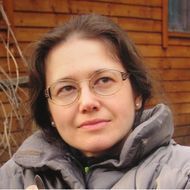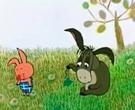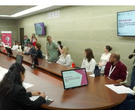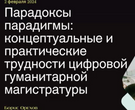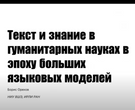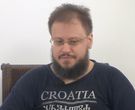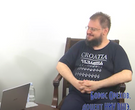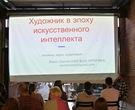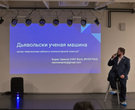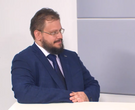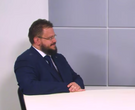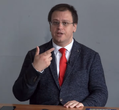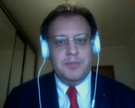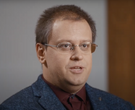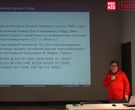- A
- A
- A
- АБB
- АБB
- АБB
- А
- А
- А
- А
- А
- Национальный исследовательский университет «Высшая школа экономики»
- Факультет гуманитарных наук
- Школа лингвистики
- Новости
- 12 и 13 мая в Школе лингвистики состоялись лекции Туре Нессета и Лоры Янды, профессоров Арктического университета Норвегии в Тромсе
-
Школа
- О школе
- Сотрудники
- Семинары
-
Исследовательские подразделения
-
- Международная лаборатория языковой конвергенции
- Центр «Русский как иностранный»
- Центр цифровых гуманитарных исследований
- Центр языка и мозга
- Лаборатория по формальным моделям в лингвистике
- Лаборатория «Корпусные исследования»
- Лаборатория языков Кавказа
- Лаборатория учебных корпусов
- Лаборатория теоретической и полевой фольклористики
- Лаборатория социогуманитарных исследований Севера и Арктики
-
-
Проекты
-
Проекты сотрудников
-
Проекты студентов и аспирантов
-
Завершённые проекты
- Некомпозициональные конструкции в эритажном русском
- Компьютерные и лингвистические ресурсы для поддержки шугнанского языка
- Лингвоспецифическая разметка китайских текстов в Русско-китайском параллельном корпусе НКРЯ
- Цифровой архив: создание корпуса журнала "Отечественные записки"
- Создание лингвокультурологического подкаста о России для иностранцев «Yellow Blue Bus» (Я люблю вас)
- База данных русских идиом
- Компьютерные и корпусные инструменты для иранистических исследований
- Русский разговорный клуб
- Шугнанские глаголы в типологическом освещении
- Создание академического онлайн-словаря персидского языка
-
- Международное сотрудничество
- Экспедиции
- Ресурсы
- Препринты
- Наша книжная полка
-
Образовательные программы
- Бакалаврская программа «Фундаментальная и компьютерная лингвистика»
- Магистерская программа «Компьютерная лингвистика»
- Магистерская программа «Лингвистическая теория и описание языка»
- Магистерская программа «Русский как иностранный во взаимодействии языков и культур»
- Магистерская программа «Цифровые методы в гуманитарных науках»
- Аспирантская школа по филологическим наукам
Адрес: 105066, г. Москва,
Старая Басманная ул., д. 21/4
Телефон: +7 (495) 772-95-90 доб. 22734
E-mail: ling@hse.ru
Редакторы сайта — Наталья Борисовна Пименова, Максим Олегович Бажуков, Константин Евгеньевич Сатдаров
- Международная лаборатория языковой конвергенции
- Лаборатория «Корпусные исследования»
- Лаборатория по формальным моделям в лингвистике
- Лаборатория языков Кавказа
- Лаборатория социогуманитарных исследований Севера и Арктики
- Научно-учебная лаборатория учебных корпусов
- Центр «Русский как иностранный»
- Научно-учебные группы
- Каталог проектов по компьютерной лингвистике
- Проекты, поддерживаемые грантами
- Русский язык для всех
- Лингвистический кружок для школьников
- Лингвистика в Центре открытого образования
Школа лингвистики была образована в декабре 2014 года. Сотрудники школы преподают на образовательных программах по теоретической и компьютерной лингвистике в бакалавриате и магистратуре. Лингвистика, которой занимаются в школе, — это не только знание иностранных языков, но прежде всего наука о языке и о способах его моделирования. Научные группы школы занимаются исследованиями в области типологии, социолингвистики и ареальной лингвистики, корпусной лингвистики и лексикографии, древних языков и истории языка. Кроме того, в школе создаются лингвистические технологии и ресурсы: корпуса, обучающие тренажеры, словари и тезаурусы, технологии для электронного представления текстов культурного наследия.
Linguistica Uralica. 2025. Vol. 61. No. 2. P. 106-130.
Марченко И. А., Ронько Р. В.
В кн.: Исследования по славянской диалектологии. Выпуск 25. Т. 25. М.: Институт славяноведения РАН, 2025. Гл. 5. С. 236-260.
arxiv.org. Computer Science. Cornell University, 2024

12 и 13 мая в Школе лингвистики состоялись лекции Туре Нессета и Лоры Янды, профессоров Арктического университета Норвегии в Тромсе
1 лекция
12 мая 18.10 - 19.30
Tore Nesset (Tromsø): What can cognitive linguistics do for phonology (and the other way around)? [80 minutes]
Phonology is an understudied area in cognitive linguistics, and historical phonology has largely been ignored by cognitive linguists. In this paper, I explore a watershed phenomenon in the history of Russian, namely the fall and vocalization of the yers, and show that cognitive linguistics (the usage-based model) offers a fruitful approach to (historical) phonology. In particular, my analysis suggests that Old/Middle Russian went through a prosodic shift from trochaic to iambic patterns, and I explore the hypothesis that Contemporary Standard Russian can be classified as a “switch language”, i.e. a language that employs both iambic and trochaic feet. The paper will discuss some foundational concepts in cognitive linguistics and show how they relate to important theoretical issues in phonological theory and analysis.
2 лекция
12 мая 19.40 - 20.20
Tore Nesset (Tromsø): Why (not) write a historical grammar of Russian? [40 minutes]
In the western world, historical linguistics has to some extent been marginalized in Slavic linguistics. Fewer universities offer full-blown programs in Slavic and Russian linguistics, and the remaining programs attract less students. Among the first components to be excluded when universities downsize their programs are courses in historical linguistics, such as courses in Old Church Slavonic and the history of Russian. At the same time, I will argue, historical Slavic linguistics is more important than ever. This puts Slavists in a difficult position: How can we offer compact and efficient courses that are felt to be relevant in the modern world? While there are numerous high quality textbooks and other teaching materials on the market, the field has lacked a compact introduction to the history of Russian in English. In order to fill this gap, I have written the book How Russian came to be the way it is (forthcoming on Slavica Publishers, August 2015). In my presentation, I will reflect on the relevance of historical linguistics for students of linguistics and Russian language today and explore the main pedagogical principles behind the book.
3 лекция
12 мая 20.25 - 21.05
Tore Nesset (Tromsø): Is Norwegian a natural human language? On compounding in cognitive linguistics [40 minutes]
Grammatical systems are characterized not only by the categories they have, but also by the categories that are absent in the system. For Slavists who are native speakers of Germanic languages, one of the most striking facts about Russian is the relatively peripheral status of compounds. From a Germanic-Russian contrastive perspective an important question is how to translate Germanic compounds into Russian. This paper reports on the first steps in a research project seeking to clarify the translation options of Norwegian compounds in Russian. However, before we can approach this contrastive task, it is necessary to sharpen our understanding of Norwegian compounds and their functions in the grammatical system and in texts. Norwegian compounds are notoriously vague and ambiguous, and one may wonder how speakers of Norwegian can use them for communicative purposes, and how addressees are able to interpret them. What do words like makrellfotball ‘(lit.) mackerel football’ and traktoregg ‘(lit.) tractor egg’ mean? And how do speakers and addressees know what they mean? I analyze a number of interesting cases from the point of view of cognitive linguistics, and argue that radial categories, compression, metaphor and metonymy offer important clues to the questions that Norwegian compounding raise.
4 лекция
13 мая 18.10 - 19.30
Laura A. Janda (Tromsø): Possession in North Saami: Rich Morphology in Competition with an Analytic Construction [80 minutes]
North Saami (a Finno-Ugric language spoken by about 20,000 people in Northern Scandinavia) is replacing the use of possessive suffixes on nouns with an analytic construction. Our data (>30K examples culled from >10M words) track this change through time and parameters of syntax, semantics, frequency, genre, and geography. Since this change follows an S-curve, the most important factor should be differential weighting of the two linguistic variants. Although language change is unquestionably different from biological evolution, we challenge the assertion that it must be driven by social values alone. We find evidence of both inherent and socially conditioned fitness values. The innovative variant may be inherently more fit because it has a wider syntactic and semantic range and is indispensable, whereas its competitor can always be replaced. Furthermore, intense pressure on this minority language conditions a fitness advantage for the innovative construction, which is morphologically simpler. There is evidence that the possessive suffix is being reinterpreted as a vocative derivational morpheme. Co-author: Lene Antonsen (Tromsø)
4 лекция
13 мая 19.40 - 21.00
Laura A. Janda (Tromsø): The use of statistics in cognitive linguistics. [80 minutes]
This talk is based on my introduction to the 2013 The Quantitative Turn in Cognitive Linguistics book. Both the field of cognitive linguistics as a whole and the journal Cognitive Linguistics have taken a quantitative turn in recent years. The majority of conference presentations, articles, and books in our field now involve some kind of quantitative analysis of language data, and results are often measured using statistical methods. This does not mean that other types of contributions (theoretical, introspective) are in any way less welcome in cognitive linguistics, but the quantitative turn in our field is now a fact to be reckoned with.
This book presents some of the people and the statistical methods that have played a leading role in defining the current state of the art in cognitive linguistics, focusing specifically on researchers and methods that have appeared prominently in our journal in the past five years. The ten articles gathered here showcase recent achievements of the following individuals (plus coauthors) who have made quantitative contributions repeatedly in the pages of Cognitive Linguistics: Ewa Dąbrowska, Holger Diessel, Dirk Geeraerts, Raymond W. Gibbs, Adele E. Goldberg, Stefan Th. Gries, Beate Hampe, Laura A. Janda, Elena V. M. Lieven, Caroline Rowland, Anatol Stefanowitsch, Anna L. Theakston, Michael Tomasello. Collectively these researchers have done much to shape contemporary practice in statistical analysis in cognitive linguistics, addressing issues at all levels of language, including phonology, morphology, syntax, semantics, acquisition, sociolinguistics, etc. ...
The methods represent those that have proven useful and versatile in linguistic analysis: chi-square, Fisher test, binomial test, ANOVA, correlation, regression, and cluster analysis. Each of these methods, with their advantages and limitations, will be discussed in turn and illustrated by highlights from the articles in this collection. Additional methods that are gaining popularity and may become part of standard use are also presented in that section, and suggestions are made for best practices in the management and sharing of data and statistical code.
Based on a study of articles published in Cognitive Linguistics, the time period 2008-2012 emerges as a noticeably different era in our history. As described in section 2, the year 2008 marks the quantitative turn for our journal, and the past five years have been substantially different from the two decades that preceded them. It seems unlikely now that we will ever turn back, so this is an appropriate time to take stock of the situation, how it came about, and what it means for our future.
- О ВЫШКЕ
- Цифры и факты
- Руководство и структура
- Устойчивое развитие в НИУ ВШЭ
- Преподаватели и сотрудники
- Корпуса и общежития
- Закупки
- Обращения граждан в НИУ ВШЭ
- Фонд целевого капитала
- Противодействие коррупции
- Сведения о доходах, расходах, об имуществе и обязательствах имущественного характера
- Сведения об образовательной организации
- Людям с ограниченными возможностями здоровья
- Единая платежная страница
- Работа в Вышке
- ОБРАЗОВАНИЕ
- Лицей
- Довузовская подготовка
- Олимпиады
- Прием в бакалавриат
- Вышка+
- Прием в магистратуру
- Аспирантура
- Дополнительное образование
- Центр развития карьеры
- Бизнес-инкубатор ВШЭ
- Образовательные партнерства
- Обратная связь и взаимодействие с получателями услуг
-
http://www.minobrnauki.gov.ru/
Министерство науки и высшего образования РФ
-
https://edu.gov.ru/
Министерство просвещения РФ
-
http://www.edu.ru
Федеральный портал «Российское образование»
-
https://elearning.hse.ru/mooc
Массовые открытые онлайн-курсы
- © НИУ ВШЭ 1993–2025 Адреса и контакты Условия использования материалов Политика конфиденциальности Карта сайта
- Редактору


